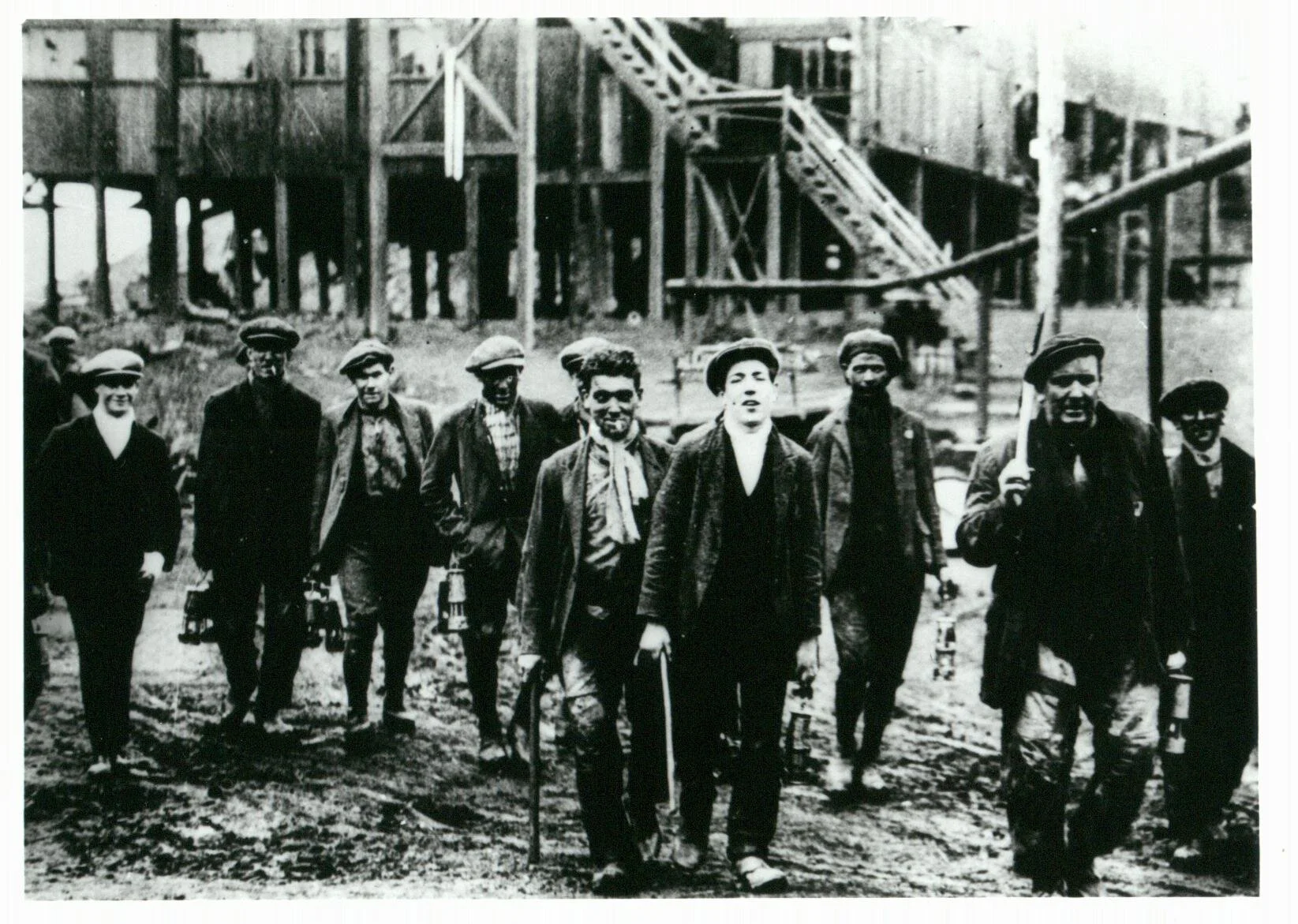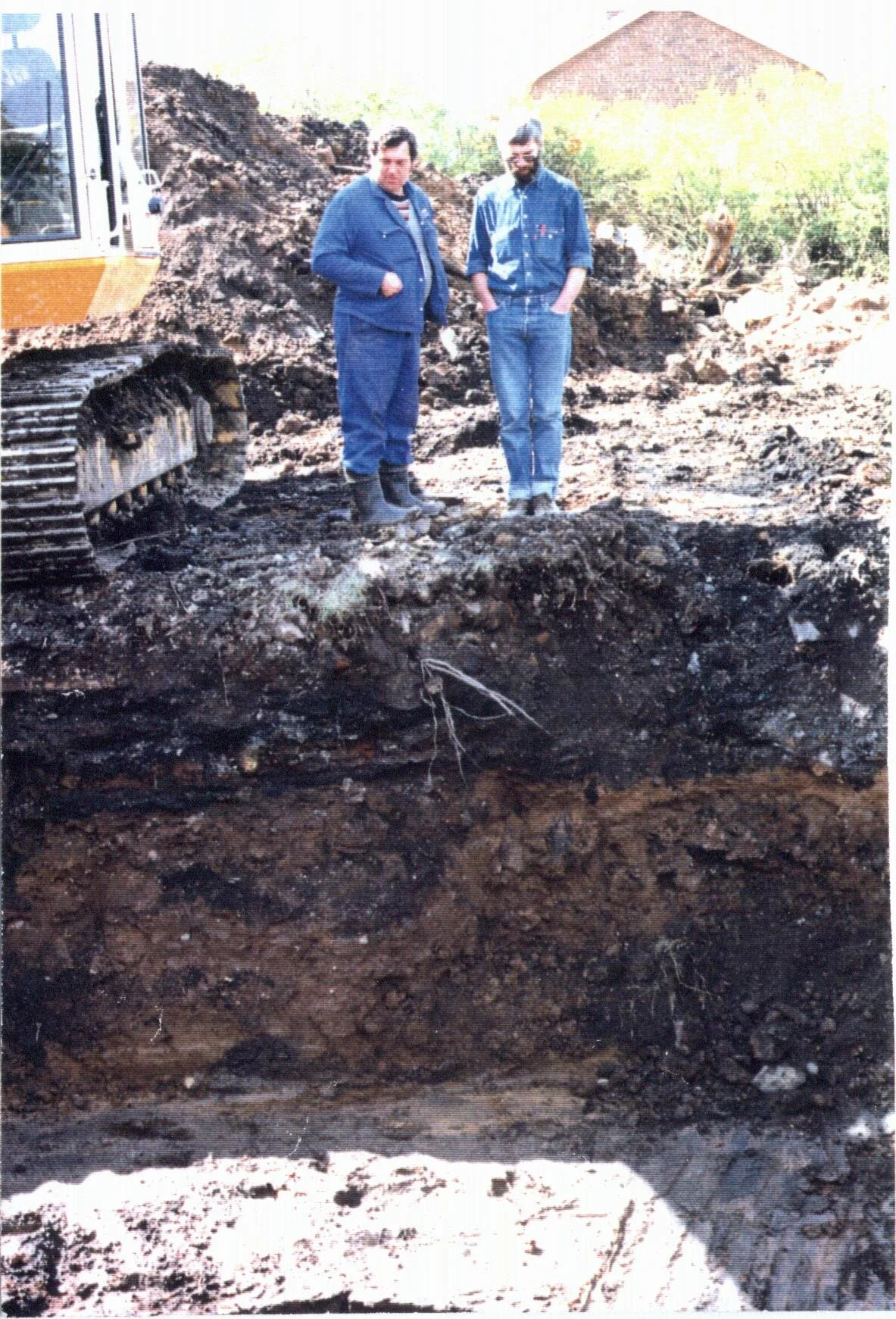The Colliery Works
A painting of the colliery just after it opened. Only the sets of headgear, for winding, are new. The buildings were constructed for the Anglican Smelting, Coal & Reduction Company Ltd. in about 1860.
Image courtesy of Williamson Art Gallery, Birkenhead.
From left to right: headgear for winding in shaft no. 2, the engine house, headgear for shaft no. 1, loading plant over the railway, Seven Row (housing, in background), explosives hut (rounded roof, foreground), round chimney (for brickworks?), octagonal chimney for engine house for shore-side shaft, (far right) angled supports for headgear for shore-side pit.
With thanks to Phil Pritchard.
This locomotive was used to shunt coal wagons between the colliery and sidings at Parkgate station. It was a 0-6-0 tank engine built by Black Hawthorne and Co. in 1881. The driver is G. Bleasdale and on the left is Bill Bleasdale. Centre is James (Jimmy) Sumner, wages clerk at the colliery.
An undated distant view of the colliery. The houses of New street can be seen to the left, and the colliery manager’s house (now 34, Marshlands Road), centre right.
A distant view of chimneys and winding gear at Wirral Colliery (undated). The Baptist mission chapel can be seen centre right. In the foreground is a Dee wildfowler in a punt.
Undated image, probably early 1900s, with the colliery winding gear, engine house and chimney in the background. Large heaps of spoil are piled near the shore.
Overseen by Daniel Jones who operated stationary engines at Wirral Colliery for at least twenty years.
With thanks to Margaret Atkin, his great-grand-daughter.
An undated image of Wirral Colliery, perhaps around 1900. The engine house is centre, with the square chimney – built after the 1890 image above – next to it; headgear stand each side for shafts nos. 1 & 2. The coal sorting and loading facility (left) would later be improved.
An undated view, perhaps 1920s. The engine house stands between the sets of headgear for shafts nos. 1 and 2. The square chimney is visible behind the right-hand headgear. Loaded railway wagons sit in the sidings and beneath the loading plant. A large spoil heap can be seen to the left.
One man holds a pick, several have miners’ lamps and two have short walking sticks for support in the low tunnels.
Three local men – none of them colliers – stand in front of colliery buildings and machinery. From left to right: Jim Wooley, William (Bill) Ashbrook and schoolboy Jack Williams.
As well as the square chimney, three circular brick structures can be seen: these surrounded the top of the shafts.
One of the shafts at Wirral Colliery being capped, probably in 1982. RSJs were laid across the filled 4.3 metre (14 feet) diameter shaft, overlaid with steel mesh and then covered in concrete. The shaft was apparently un-numbered, closest to the shore of the three in use.
The remaining mountainous spoil heaps, taken in 1973. There are many reports of children playing on them.
With thanks to Susan Thomas. More of her images of the colliery area in the 1970s and of other parts of Neston and Parkgate can be found here.















